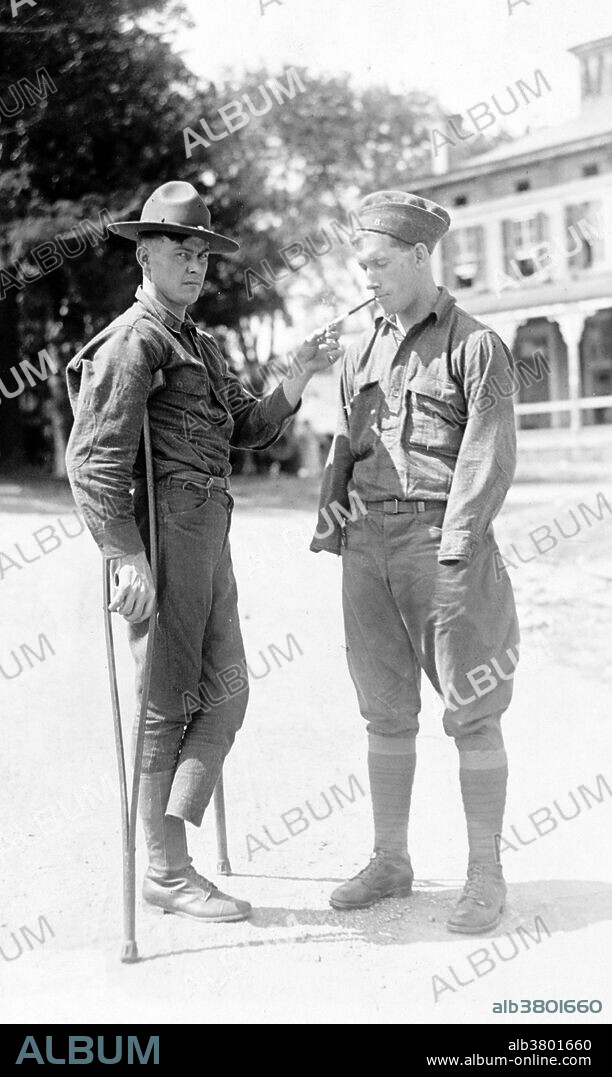alb3801660
WWI, Amputees, Casualties of War

|
Añadir a otro lightbox |
|
Añadir a otro lightbox |



¿Ya tienes cuenta? Iniciar sesión
¿No tienes cuenta? Regístrate
Compra esta imagen.
Selecciona el uso:

Título:
WWI, Amputees, Casualties of War
Descripción:
Ver traducción automática
At Walter Reed Hospital, a soldier who is missing a foot lights a cigarette for another soldier who is missing both arms. Before WWI the hospital's capacity was 80 patient beds. But during the war it grew to 2,500 in a matter of months. When a soldier was hit by a bullet (soft lead ball) it flattened, causing terrible injuries, shattering bone, and tearing off large chunks of flesh. There were no antibiotics, no way to fight infection except removing a limb before gangrene set in. In traumatic amputations, the limb was simply cut across and the bone trimmed. There was no sanitation and the doctors reused tools without even washing them.
Crédito:
Album / LOC/Science Source
Autorizaciones:
Modelo: No - Propiedad: No
¿Preguntas relacionadas con los derechos?
¿Preguntas relacionadas con los derechos?
Tamaño imagen:
3000 x 5022 px | 43.1 MB
Tamaño impresión:
25.4 x 42.5 cm | 10.0 x 16.7 in (300 dpi)
Palabras clave:
ACONTECIMIENTO • AMERICANO • AMPUTADO • AMPUTAR • BAJA MILITAR • BLANCO Y NEGRO • CIGARRILLO • CONFLICTO BELICO • DESVENTAJA • DETERIORADA • DISCAPACIDAD • DISCAPACITADO • DISMINUIDO FISICO • ESTADOS UNIDOS DE AMERICA • ESTADOS UNIDOS • FAMOSA • FAMOSO • FOTO • FOTOGRAFIA • FUERZAS ARMADAS • FUMANDO • FUMAR • GRAN GUERRA • GUERRA MUNDIAL I 1914/18 • GUERRA MUNDIAL I • GUERRA • HERIDO • HISTORIA • HISTORICO • HOMBRE • HOMBRES • HOSPITAL MILITAR • ILUMINACION • IMPORTANTE • MASCULINO • MILITAR • MINUSVALIDO • PRIMERA GUERRA MUNDIAL 1914/18 • PRIMERA GUERRA MUNDIAL • RETRATO DE HOMBRE • S. XX • SIGLO XX • SOLDADO • WAR • WW1
 Pinterest
Pinterest Twitter
Twitter Facebook
Facebook Copiar enlace
Copiar enlace Email
Email
